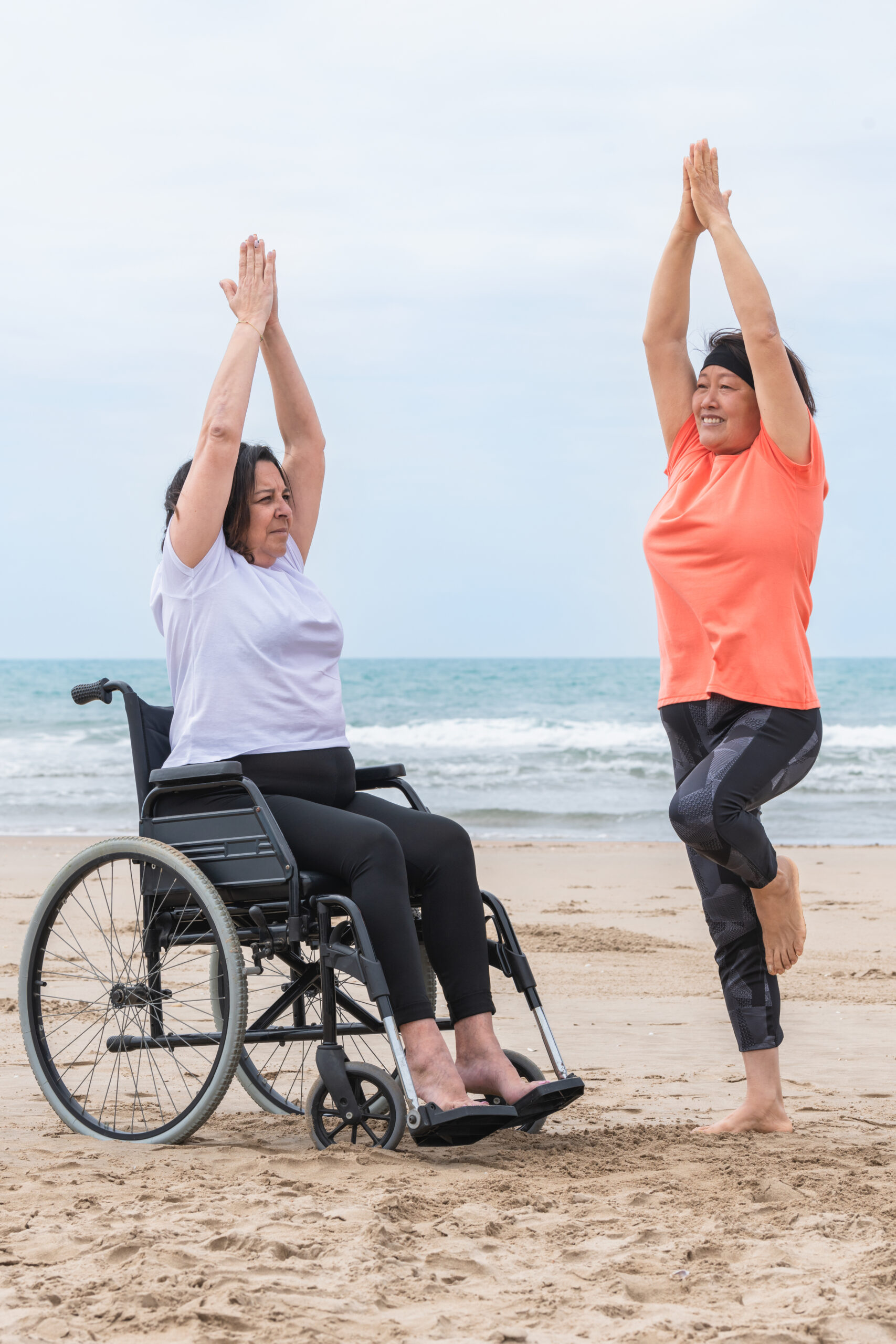Yoga is a beautiful and transformative practice, but for some individuals with physical disabilities or limitations, traditional classes may be inaccessible. However, this doesn’t have to be the case. With the use of adaptive techniques, yoga can be made inclusive and accessible for all abilities. In this blog post, we’ll explore the importance of inclusive yoga, the challenges it presents, and how adapting yoga poses and practices can make it accessible to everyone. Whether you’re a yoga teacher, a student, or someone looking to make yoga more accessible for yourself or a loved one, we’ll share tips and techniques to help you create a welcoming environment and an enjoyable practice for all.
Understanding Adaptive Yoga
Yoga is a form of physical activity that has been shown to provide numerous benefits for mental and physical health. However, for individuals with disabilities, chronic pain, or mental health issues such as anxiety or depression, traditional yoga classes may not be accessible. That’s where adaptive yoga comes in. Also known as yoga for disabilities, adaptive yoga is designed to be more accessible and inclusive, ensuring that everyone can reap the benefits of this practice. By modifying poses and using props such as blocks or straps, adaptive yoga teachers can help individuals with physical limitations participate in the class. Additionally, by creating a safe and supportive environment, adaptive yoga classes can help individuals with mental health issues feel more comfortable and connected. Overall, adaptive yoga offers a way for individuals with diverse needs to experience the benefits of yoga and improve their overall well-being.
Adaptive yoga is a truly inclusive form of yoga that is designed to make yoga accessible to everyone, regardless of physical or mental limitations. It recognizes that each individual has their own unique needs and abilities, and it works to modify the practice to accommodate those needs. It is not just about modified poses, but it also incorporates breathing exercises, mindfulness techniques, and guided meditation to help individuals find relaxation, balance, and inner peace. Adaptive yoga is a powerful tool that enables everyone to experience the benefits of yoga, and it helps to create a more diverse, inclusive, and welcoming yoga community. It truly embodies the spirit of “yoga for everyone”.
Benefits of Adapting Your Yoga Practice for All Abilities
Yoga is a practice that brings both physical and mental benefits. However, not everyone may be able to practice it in the traditional way due to their physical or cognitive limitations. This is where adaptive yoga comes in. Adaptive yoga is a type of yoga that caters to individuals with all kinds of abilities, including physical, cognitive, emotional, and spiritual. It offers a way for people with disabilities or limitations to experience the benefits of yoga without feeling overwhelmed or restricted. With adaptive yoga, individuals can access the power of yoga while respecting their body’s abilities and limitations. It is an inclusive practice that encourages people of all levels to participate, making it a wonderful way to enhance physical and mental wellness.
Adaptive yoga is an incredibly beneficial practice for anyone who may find traditional poses difficult due to physical limitations. This type of yoga allows people to experience the calming power of yoga while also providing modifications to poses that are comfortable and achievable. By modifying the poses for individual needs, adaptive yoga creates an environment where everyone can participate in a safe and supportive atmosphere. This is especially important for those who may have physical challenges, such as those with limited mobility or chronic pain.
The Right Training
Adaptive yoga teachers are trained to help students find the modifications that work best for their bodies, so they can move through the practice with ease and comfort. Overall, adaptive yoga is a wonderful way to experience the many benefits of yoga, while also honoring your unique physical needs. Adaptive yoga emphasizes the idea that yoga is for everyone, regardless of their age, ability, or background. By modifying traditional yoga postures to fit individual needs, adaptive yoga makes the practice more accessible and inclusive.
This promotes a greater sense of community and understanding among practitioners, creating a safe and welcoming environment for all. Through adaptive yoga, we can learn to appreciate the diverse perspectives and experiences that each individual brings to the mat, ultimately enhancing our own practice and understanding of yoga as a whole. Ultimately, the practice of adaptive yoga can help us connect with ourselves and with others in a more compassionate and mindful way, reminding us that yoga truly is for everyone.
To Conclude
Inclusivity is the cornerstone of a thriving yoga community. With adaptive techniques, we can break down barriers and make yoga accessible for everyone, regardless of their abilities or limitations. Whether you’re a seasoned yogi or just starting out, it’s important to recognize the challenges that inclusive yoga presents and to put in the work to create a welcoming environment for all. By adapting poses and practices to suit individual needs, we can create an enjoyable, accessible practice that benefits everyone. With a little effort and a lot of heart, we can build a yoga community that truly supports and uplifts everyone who wants to participate.



Comments